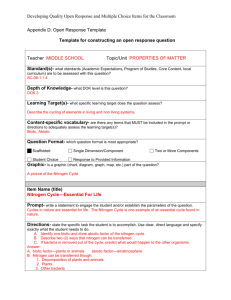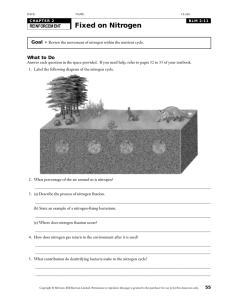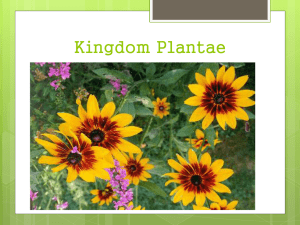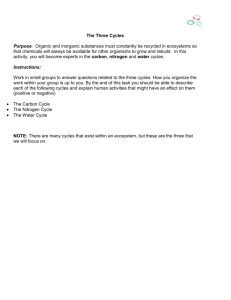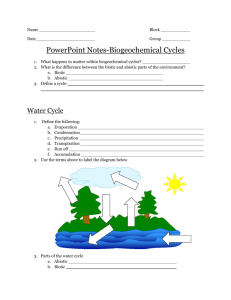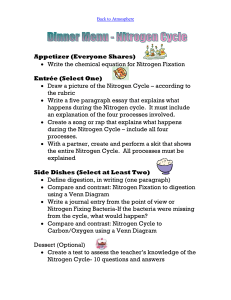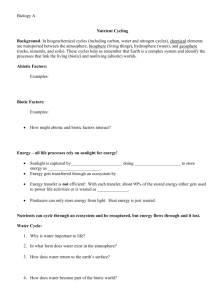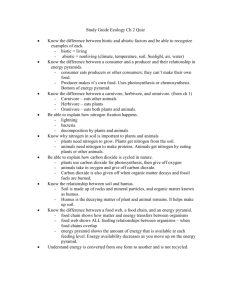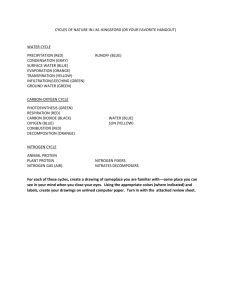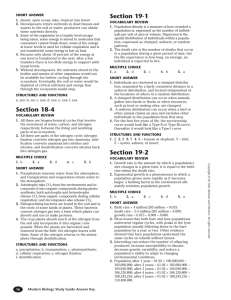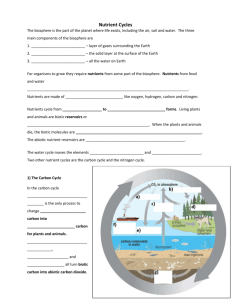Welcome to 6th Grade Science Class
advertisement
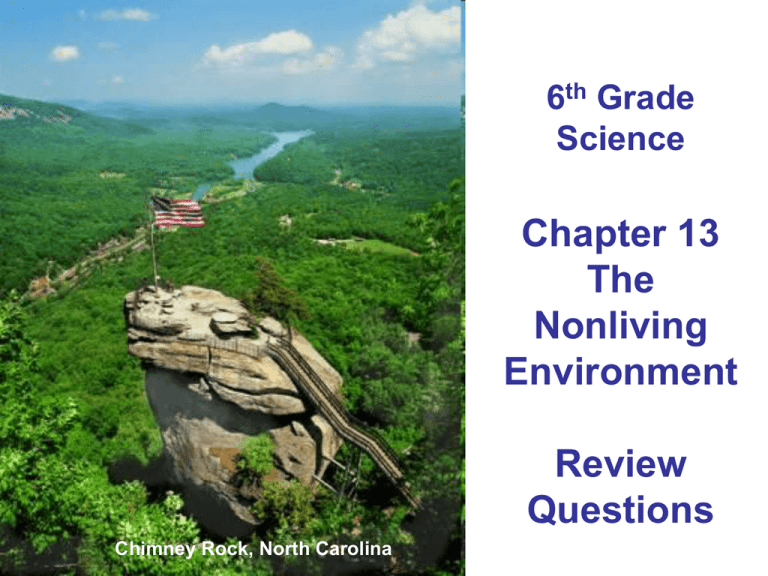
6th Grade Science Chapter 13 The Nonliving Environment Review Questions Chimney Rock, North Carolina Chapter 13 Review Questions 2. ______ can make their own food. Answer: producers Chapter 13 Review Questions 4. The nonliving, physical features of the environment are called ______ factors. Answer: abiotic Chapter 13 Review Questions 5. ______ is the Location on Earth relative to the equator that helps determine the amount of sunlight an area receives. Answer: latitude Chapter 13 Review Questions 6. _______ it the average weather over time. Answer: climate Chapter 13 Review Questions 3. The term ______ means living or once living. Answer: biotic Chapter 13 Review Questions 9. The major ingredient of the fluid inside cells of living organisms is ______ . Answer: water Chapter 13 Review Questions 10. _____ is composed of biotic and abiotic factors. Answer: soil Chapter 13 Review Questions 12. _____ is the energy source for most life on Earth. Answer: sunlight Chapter 13 Review Questions 13. As ______ gets higher, trees get shorter and the atmosphere gets thinner. Answer: Elevation (altitude) Chapter 13 Review Questions 14. The process of water changing from a gas to a liquid is ______. Answer: condensation Chapter 13 Review Questions 19. Nitrogen fixation is performed by ______. Answer: bacteria Chapter 13 Review Questions 15. The process of water changing from a liquid to a gas is ______. Answer: evaporation Chapter 13 Review Questions 16. The process of plants adding water to the atmosphere is called ______. Answer: transpiration Chapter 13 Review Questions 11. _____ is composed of 78% nitrogen. Answer: air Chapter 13 Review Questions 1. ______ depend on plants and animals for their food. Answer: consumers Chapter 13 Review Questions 17. Water, snow, sleet, or hail that falls to the ground from the sky is called ______. Answer: precipitation Chapter 13 Review Questions 21. The production of food from chemicals is called ______. Answer: chemosynthesis Chapter 13 Review Questions 32. The ______ make up the second and higher steps in the food chain. Answer: consumers Chapter 13 Review Questions 23. Photosynthesis is part of the continuous movement of the _____ cycle. Answer: Carbon cycle Chapter 13 Review Questions 24. _____ The transfer of nitrogen from the air to the soil to organism and back to soil or air. Answer: Nitrogen cycle Chapter 13 Review Questions 25. The process that changes nitrogen gas into a compound that plants can use is called ______. Answer: Nitrogen fixation Chapter 13 Review Questions 31. A food chain begins with ______. Answer: producers Chapter 13 Review Questions 27. _____ is the element that helps plants grow. Answer: nitrogen Chapter 13 Review Questions 30. A diagram that shows the comparative amount of energy at each feeding level is called a(n) ___. Answer: Energy pyramid Chapter 13 Review Questions 22. The continuous movement of water from earth’s surface to the air, and back to Earth’s surface is called the _____. Answer: Water cycle Chapter 13 Review Questions 28. ______ is removed from the air during photosynthesis. Answer: Carbon dioxide Chapter 13 Review Questions 29. A diagram that shows all the possible feeding, or energy transfer, relationships in a community is called a(n) ______. Answer: Food web Chapter 13 Review Questions 33. ______ energy is used in photosynthesis. Answer: Light Chapter 13 Review Questions 34. ______ and ______ are the two most important components of climate Answer: Precipitation and Temperature Chapter 13 Review Questions 33. ______ is when the presences of mountains can affect rainfall patterns. Answer: The Rain Shadow Effect



